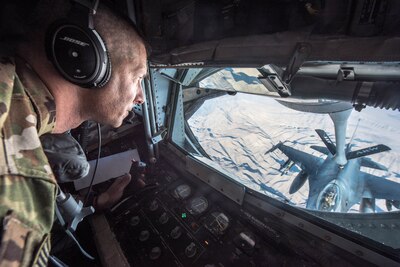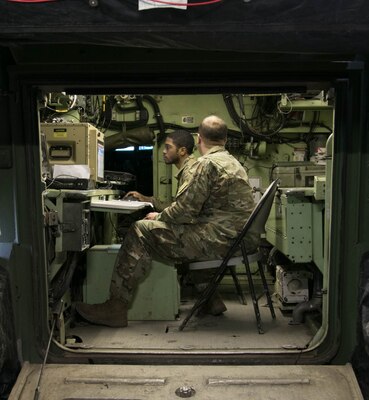By Air Force Tech. Sgt. Nestor Cruz 944th Fighter Wing
TUCSON, Ariz., Feb. 5, 2018 — Air Force Reserve Tech. Sgt.
Derrick Williams believes keeping busy helps his family, even when he’s not
around due to his military service.
Yellow Ribbon
“We’re a pretty active family,” Williams said at a Yellow
Ribbon Reintegration Program event he attended here in mid-January with his
wife, Mea, and their two sons. “There’s always something to do, so regardless
of whether I’m home or not, there’s pretty much a schedule and my wife, Mea,
does an excellent job making sure that schedule is maintained.”
That busy schedule includes Mea’s work as a business
executive, Williams’ civilian career as a Texas state trooper and the active
participation of their sons, Tyjae and Jaden, in sports, martial arts and
music. Williams also serves with the reserve’s 74th Aerial Port Squadron at
Joint Base San Antonio-Lackland, Texas.
Yellow Ribbon Program
Yellow Ribbon promotes the well-being of reservists and
their families by connecting them with resources before and after deployments.
It began in 2008 following a congressional mandate for the Defense Department
to help reservists and National Guard members maintain resiliency as they
transitioned between their military and civilian roles. Each year, Yellow
Ribbon trains 7,000 reservists and their family members in education benefits,
health care, retirement information and more at a series of weekend training
events such as the one the Williamses attended.
Williams’ sons recognize their busy schedule can sometimes
be stressful for their mother and help out around the home, especially when
their father is away for military duty.
“I feel I have to be in charge, keep things steady and not
chaotic when Dad’s not around,” said Tyjae, 14. “I have to play husband for Mom
and help keep everything in order and be the best I can be so Mom doesn’t get
stressed.”
Jaden, 11, feels the same way, speaking with a maturity
beyond his age.
“Sometimes it’s frustrating when Daddy’s not home because we
want to do something but Mommy has to work or we don’t have time to do it,”
Jaden said. “I think about the situation and how Daddy isn’t home or he has to
do something and Mommy is the boss at her job and she has a lot of work to do.
Her schedule is already busy including our schedule, so it’s even more stress
for her.”
The couple is pleased with how responsible their sons are.
“I’m proud of our boys and our family because I know a lot
of families can be torn apart,” Williams said. “I think it’s been a growth
factor for our family because they know Dad isn’t always there like some of
their friends, but it’s a way of life.”
Aside from staying mentally and physically active, the
Williams family rely on their faith to get through whatever life throws at
them.
“Faith is a big thing in our family,” Mea said. “My faith
puts things in perspective. Even when we come up against a challenge, we’re
reminded that God doesn’t give us more than we can bear. We can get through
anything, even a 6-month deployment or a 1-year deployment, we can still do it.
In the end, we come out stronger.”
Williams said faith also helps him in his civilian law
enforcement job.
“I’m the quintessential optimist, so I’m always looking for
positivity even in the most negative situations,” he said. “[As a state
trooper], I don’t always encounter people in the best situations. But even in
those brief moments, my faith helps me to realize they’re people just like I
am.”
Mea believes any family can navigate military life with a
little bit of faith to guide the way.
“Tap into your faith and tap into the support system you
have,” she said.
Williams also believes goal-setting can help military
families.
“Many times, people begin to focus on the fact that they are
gone for six months and that becomes overwhelming,” he said. “When I deploy, I
set goals for myself to make sure I keep myself busy and make sure I keep my
mind occupied on positive things.”
Goal-setting also helps his sons and creates conversation
pieces during phone conversations, Williams added.









